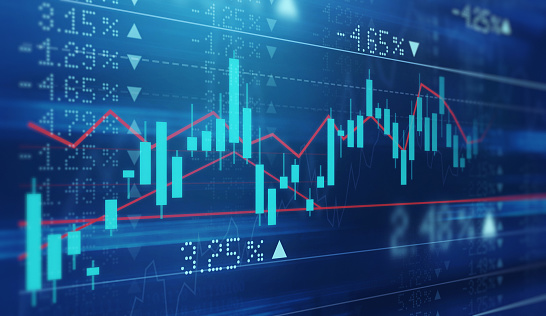/i.s3.glbimg.com/v1/AUTH_37554604729d4b2f9f3eb9ad8a691345/internal_photos/bs/2022/e/t/BT00ixROOCL0SAmfaCeA/15bra-300-amaz-a2-img01.jpg)
The Amazon urbanization pattern has a dispersed population, low demographic density, only two metropolises and the absence of medium-sized cities. A great distance separate urban centers, there is lack of access to basic services such as sewage and water networks, garbage collection, power and broadband. The cities have their backs to the forest or to the rivers. The more than 700 municipalities in the so-called Legal Amazon are out of step with Brazil in all indicators. The good news is that there is still time to design urban centers in a planned and sustainable way.
Two researchers with the Federal University of Juiz de Fora — economist Flavia Chein and Igor Procópio — studied the Amazon cities in detail and produced the report “The cities in the Legal Amazon: diagnosis and challenges for sustainable urbanization”. The report is part of the series of studies on the region of the Amazônia 2030 project.
“The Legal Amazon region is historically configured as the least developed in the country and the urbanization process was not able to create sustainable cities,” says Ms. Chein, “A path was opened in the forest with the construction of roads and there was an explosion of municipalities around, but they were not able to create a network of services. This would be fundamental in the region, because the distances are very large. There is no integrated urban network”.
Many Amazonian municipalities are small, with up to 20,000 inhabitants. There are few medium-sized ones and only Belém and Manaus are metropolises. This lack of intermediary centers worsens the possibility of developing conditions for urban habitability,” says Ms. Chein.
The idea is to identify solutions and policies for a more sustainable urbanization of the region. “We still have a territory to be occupied. The occupation in the past happened in a disorganized way. The Amazon is in a different stage of occupation from the rest of Brazil. It has a demand for housing and equipment that can be designed incorporating the ecosystem”, he says. “It is not because we made mistakes in the past that we need to continue with this non-existent urban design project.”
The analysis defined what is urbanization considering the features of the huge municipalities in the Legal Amazon. “Amazonian cities are less urbanized than those in the rest of Brazil.” She explains: “If one analyzes the Amazon municipalities, most have up to 60% of the people residing in urban areas, while in the rest of Brazil the percentage is higher than 90%. What we have are scattered urbanization spots in giant municipalities, places where the populations are more agglomerated. It is there that the typical problems of a non-ordered and unplanned urbanization can be identified.”
The researchers considered two measures in the diagnosis. The first shows the percentage of the municipality’s total population that lives in an urbanized area. The second relates the total area of the municipality and the percentage of urbanized area.
Ananindeua, in the metropolitan region of Belém, is the Amazonian municipality that has the highest level of urbanization — 100% of the population lives in the urban area. But in relation to the total area of the municipality, urbanization does not reach 32%. The most urbanized municipality in Brazil, which is Belo Horizonte, has 75% of urbanized area.
“When you look at the distance from the municipalities in the Legal Amazon to the nearest metropolis, what you see are great distances. In the rest of Brazil, with many municipalities and metropolises on the coast, the distances are much smaller,” she says.
In the Amazon the distances are barriers. The scattered populations have no connection with the large centers. Another difficulty is the heterogeneity within the municipalities themselves. “From the point of view of urbanization, the Amazon cannot be treated as a single space. There are many Amazons hidden in there”, says Ms. Chein. To deal with the difficulties, the economist says that “it is necessary to have a much greater pact between the several government levels. Besides this, the role of the municipal governments is fundamental.”
“It is necessary to think of the Amazon inside the Amazon and not as something important for the world or for Brazil,” she recommends. “It is necessary to generate well-being in the cities, work conditions and access to culture for those who live there,” she says. “It is in the cities that things happen. Today we have a generation of young people in the Amazon that needs to be encouraged and recognize the region as a place that welcomes them. This starts with designing cities with sanitation, power, communication, schools, bookstores, theaters and cinemas.
Source: Valor International



/i.s3.glbimg.com/v1/AUTH_37554604729d4b2f9f3eb9ad8a691345/internal_photos/bs/2022/S/Q/A7vuG2SvqIUhJqIs8fCw/soy-exports-in-paranagua-fabio-scremin-appa.png)
/i.s3.glbimg.com/v1/AUTH_37554604729d4b2f9f3eb9ad8a691345/internal_photos/bs/2022/z/3/lF09AaTje6Bi4mjY0C8Q/rebanho-bovino-em-mato-grosso-do-sul-divulgacao.png)
/i.s3.glbimg.com/v1/AUTH_37554604729d4b2f9f3eb9ad8a691345/internal_photos/bs/2022/1/k/BpkaR2SXihzi8EzUBdvg/15bra-100-petroleo-a6-img01.jpg)


/i.s3.glbimg.com/v1/AUTH_37554604729d4b2f9f3eb9ad8a691345/internal_photos/bs/2022/g/J/5E06xASTGTUyMMzAHRPg/14agr-100-ferti-b7-img01.jpg)
